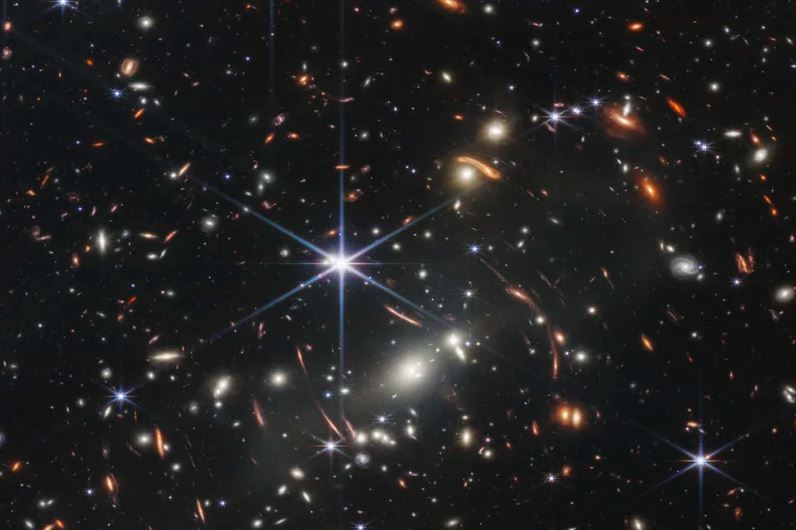First image from world’s most powerful space telescope revealed

The first image from NASA’s James Webb Space Telescope has been released just now, depicting the sharpest picture of the early universe ever taken.
According to NASA, if you held a grain of sand up to the sky at arm’s length, the tiny grain would be the size of Webb’s view in the picture below.
Some of the images taken by the $10 billion telescope will depict light from not too long after the Big Bang occurred.
We’re also expecting some of the pictures to include a view of a giant gaseous planet outside our solar system, two images of a nebula where stars are born and die in spectacular beauty and an update of a classic image of five tightly clustered galaxies that dance around each other.
It’s here–the deepest, sharpest infrared view of the universe to date: Webb’s First Deep Field.
Previewed by @POTUS on July 11, it shows galaxies once invisible to us. The full set of @NASAWebb‘s first full-color images & data will be revealed July 12: https://t.co/63zxpNDi4I pic.twitter.com/zAr7YoFZ8C
— NASA (@NASA) July 11, 2022
UWA astrophysicist Elisabete da Cunha said the release of the image was highly anticipated and “huge” for the space community.
“It’s the culmination of decades of work and every astronomer around the world, even if they worked on this or not directly, is extremely excited about this today.
“I’ve been looking at this picture non stop since I woke up, I can’t stop looking at it.
“There’s just thousands of galaxies in that image… we are seeing them with amazing amounts of detail that we couldn’t see with Hubble… JWT is really blowing it out of the park, it’s amazing.”
Tap PLAY to hear her explain what astronomers could learn from this image














